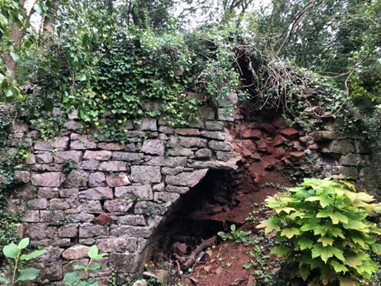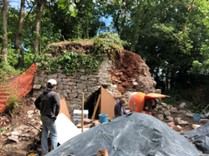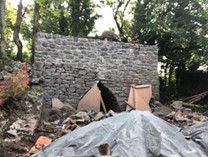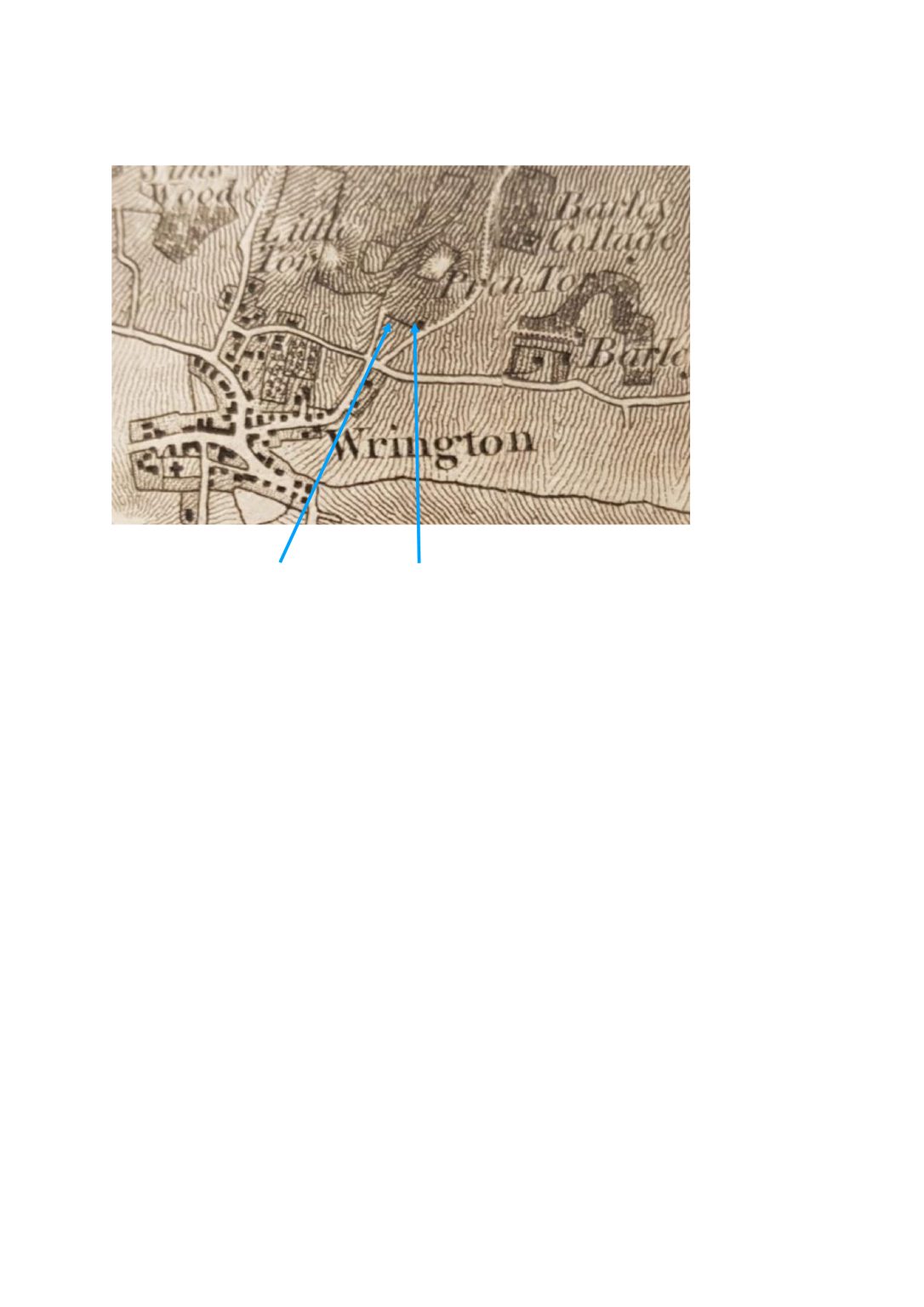In September 1941, the newly formed Wrington fire brigade responded to its first village fire. However, it wasn’t a building set alight by WWII incendiary bombs, but something less dramatic—a fire in Prestow Woods. Amazingly, this fire had been burning for about three months due to the build-up of flammable gases from the dumped materials. The fire had spread across almost the entire area used as a dump and even affected the surrounding limestone rock. Despite having low water pressure, the fire brigade eventually managed to put out the fire
In recent years, as volunteers began opening up Prestow Wood, they realised the west kiln was in very poor condition, with the risk of rocks falling from its upper parts.
The west lime kiln in early 2024

To make the west kiln safe, experts were consulted, including:
North Somerset Archaeologist
Avon Industrial Buildings Trust
Yatton, Congresbury, Claverham, and Cleeve Archaeology Research Trust (YCCCART)
Back in 1984, a thorough survey of lime kilns in the area was carried out by the Bristol Industrial Archaeology Society, which found that only 8 out of 121 kilns were in good condition.
A more recent study was done to check if it was still important to restore the Prestow Wood lime kiln. It found that, of the 8 kilns that were in good shape in 1984, only one (the Sandford lime kiln) is still in good condition. The others have deteriorated over the last 40 years, mostly because of trees growing nearby and damaging the structures with their roots. Many stones have fallen from these kilns, leaving most in poor condition.
Because of this, it was decided that restoring the Prestow Wood lime kilns is important in preserving this part of our industrial heritage.
Restoration of the west kiln
Ivy was removed from the parts of the kiln that could be reached, and some fallen soil and rocks were cleared to allow local stonemasons to submit bids for the restoration work.
A total of £50,000 was secured from the Landfill Communities Grant scheme managed by Enovert Waste Services. This money covered both the restoration of the kiln and other projects in Prestow Wood. Mathews Masonry, a local company from Congresbury, was hired to restore the West Kiln. Sam, the owner of Mathews Masonry, has strong ties to the village, where his mother and grandmother (Pam Horsham) still live.
Work began in June 2024 and was finished by October 2024.
(Need to put in more photos of the restoration and the time lapse video when done)
The East Kiln
When the Prestow Wood Conservation Group began working in 2022, the east kiln wasn’t well-known. It was brought to attention by members of the Wrington Local History Society. Research revealed that this kiln was built in 1813 by the Earl of Darlington, who was the Lord of the Manor at the time. Interestingly, the kiln has an unusual gothic style. this means that the east lime kiln predates the west one. This is confirmed by a map from 1817 which shows the east kiln but not the west.
No west lime kiln on map East lime kiln shown
1817 map (note Wrington Hill only went as far as Prestow Wood)
One of the earliest uses of the stone from the quarry and the lime produced in the east kiln may have been for the construction and expansion of the Wrington Congregational Chapel in 1815 and 1817.
The east lime kiln in early 2024
Need photo of the kiln following early clearing work
There are plans to restore the east kiln in 2025. To prepare for the work, ivy has already been cleared from parts of the structure, soil has been removed from the area in front, and a new path has been constructed. This path will eventually be accessible for wheelchairs, mobility scooters, and pushchairs.


